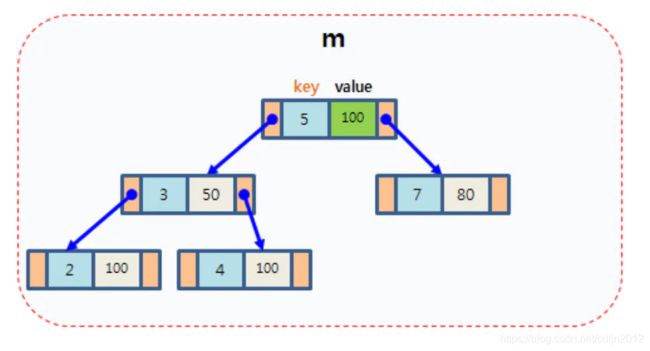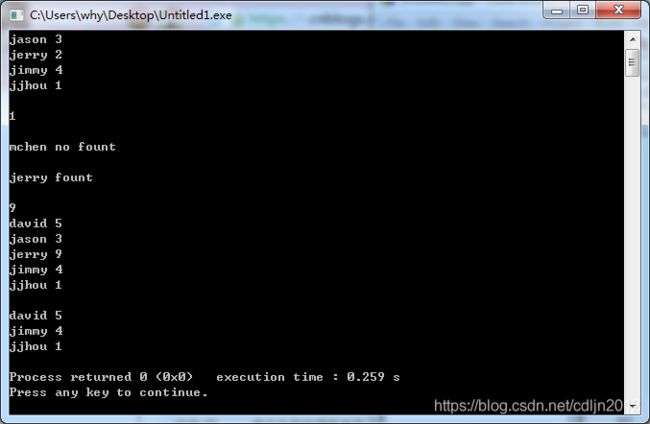STL--非线性容器MAP解析
- MAP概念
Map是STL的一个关联容器,它提供一对一(其中第一个可以称为关键字,每个关键字只能在map中出现一次,第二个可能称为该关键字的值)的数据 处理能力,由于这个特性,它有可能在我们处理一对一数据的时候,在编程上提供快速通道。
这里说下map内部数据的组织,map内部自建一颗红黑树(一 种非严格意义上的平衡二叉树),这颗树具有对数据自动排序的功能,所以在map内部所有的数据都是有序的,后边我们会见识到有序的好处。map是一类关联式容器。它的特点是增加和删除节点对迭代器的影响很小,除了那个操作节点,对其他的节点都没有什么影响。
map是STL的一个关联容器,它以

- MAP的使用
需要导入头文件
#include // STL头文件没有扩展名.h
map 对象是一个模版类,需要关键字和存储对象两个模版参数
std::map
可以对模版进行类型定义使其使用方便
typedef std::map
MAP_INI_STRING person;
3.MAP的构造
map最基本的构造函数
map
map
map
- MAP主要成员函数
4.1 map添加数据
map<int ,string> maplive;
1.maplive.insert(pair<int,string>(102,"aclive"));
2.maplive.insert(map<int,string>::value_type(321,"hai"));
3, maplive[112]="April";//map中最简单最常用的插入添加!
4.2 map中元素的查找
find()函数返回一个迭代器指向键值为key的元素,如果没找到就返回指向map尾部的迭代器。
map<int ,string >::iterator l_it;;
l_it=maplive.find(112);
if(l_it==maplive.end())
cout<<"we do not find 112"<<endl;
else cout<<"wo find 112"<<endl;
4.3 map中元素的删除
如删除112
map<int ,string >::iterator l_it;;
l_it=maplive.find(112);
if(l_it==maplive.end())
cout<<"we do not find 112"<<endl;
else maplive.erase(l_it); //delete 112;
4.4 map中 swap的用法
Map中的swap不是一个容器中的元素交换,而是两个容器交换; 示例:
#include
#include 4.5 map的sort问题
Map中的元素是自动按key升序排序,所以不能对map用sort函数。 示例:
#include
#include 4.6 map的基本操作函数
C++ Maps是一种关联式容器,包含“关键字/值”对
begin() 返回指向map头部的迭代器
clear() 删除所有元素
count() 返回指定元素出现的次数
empty() 如果map为空则返回true
end() 返回指向map末尾的迭代器
equal_range() 返回特殊条目的迭代器对
erase() 删除一个元素
find() 查找一个元素
get_allocator() 返回map的配置器
insert() 插入元素
key_comp() 返回比较元素key的函数
lower_bound() 返回键值>=给定元素的第一个位置
max_size() 返回可以容纳的最大元素个数
rbegin() 返回一个指向map尾部的逆向迭代器
rend() 返回一个指向map头部的逆向迭代器
size() 返回map中元素的个数
swap() 交换两个map
upper_bound() 返回键值>给定元素的第一个位置
value_comp() 返回比较元素value的函数
#include 